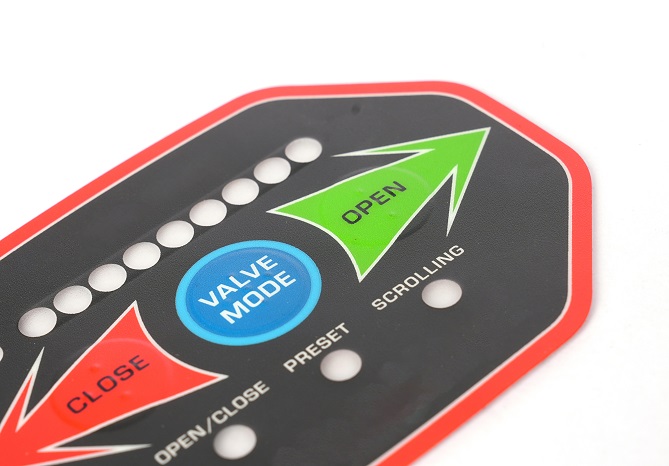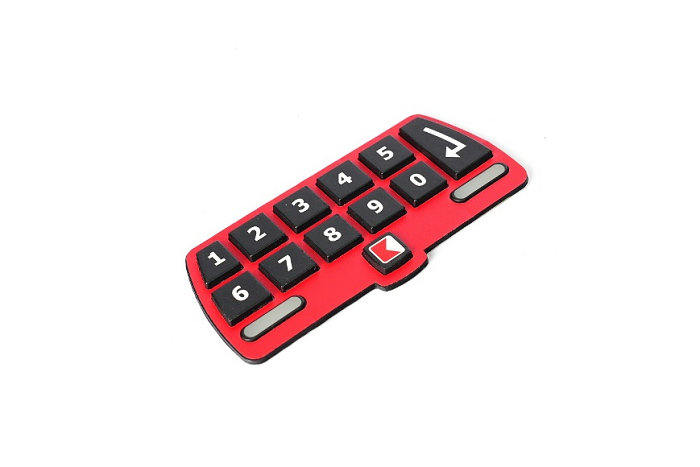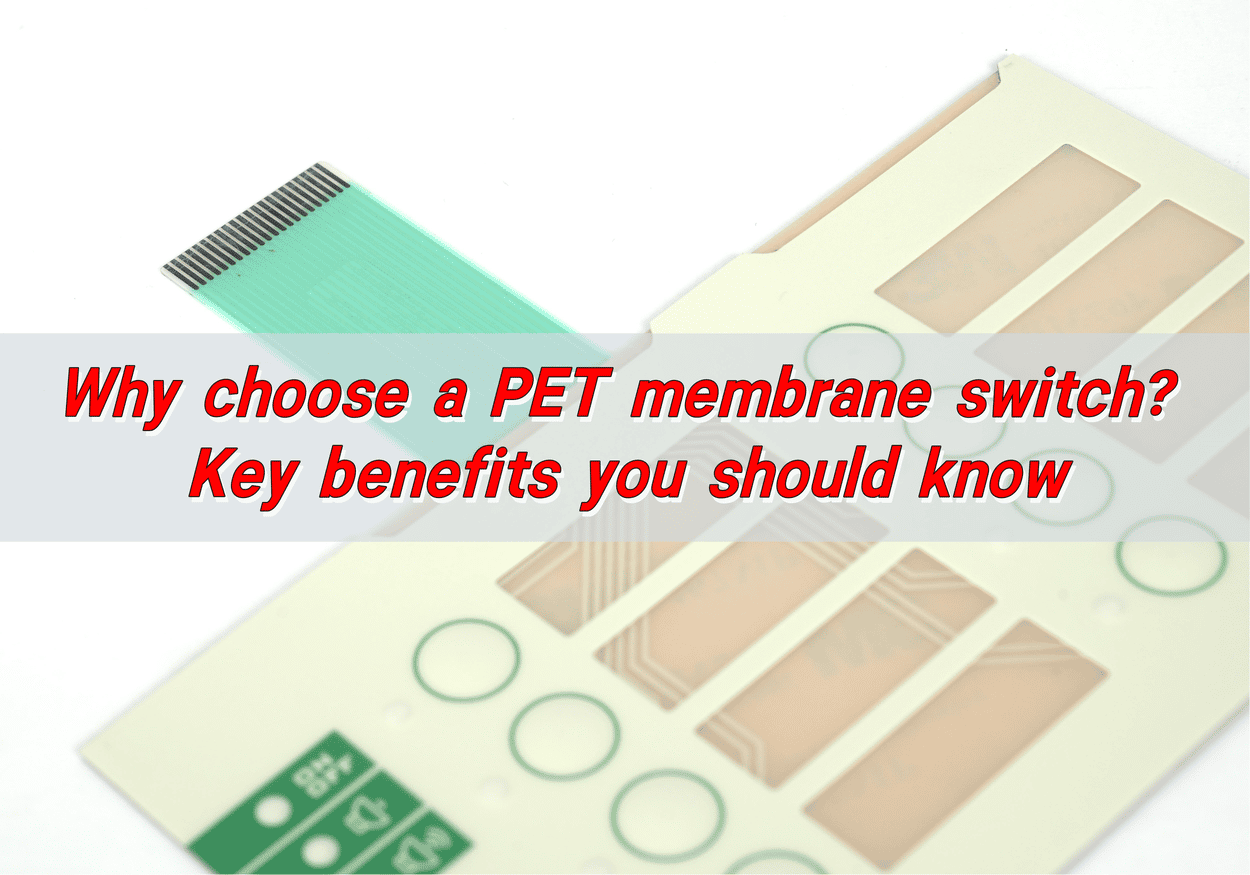
Little Knowledge About Membrane Switch Panel Layer
Little Knowledge About Membrane Switch Panel Layer
Thin film panels are very common in the field of household appliances and various industrial products, and have both decorative and functional control panel trademarks.
The membrane switch plays an important role as a tactile switch between the user and the instrument. Membrane buttons have a better feel and longer life, which can indirectly improve the production efficiency of various types of switches using conductive films. The contacts on the membrane button are located on the conductive parts of the PCB. When the button is pressed by external force, the center point of the contact is concave and contacts the circuit on the PCB, thereby forming a loop, allowing current to pass through, and the entire product can work normally.
Membrane switch panels can be printed on plastics such as PVC, PC, PET, PMMA, etc. through digital printing technology to customize graphics, text, and color requirements according to customer needs. Double-sided tape can be pasted on the back to produce logos, control panels, and protection. of plastic products.

How to choose the thickness of membrane switch panel?
Regardless of whether it is PC, PVC or PET, as the panel layer of the membrane switch, due to its resilience, lifespan and other factors, the thickness is usually 0.175MM, which is relatively moderate. Users can adjust it within the appropriate range according to the characteristics of the product. However, it should be noted that: if the panel layer is too thin, the three-dimensional molding will not be obvious enough, and it is difficult to keep it flat in a larger area; if the panel layer is too thick, the feel will be dull and the operation strength will increase.

What is the use of membrane switch button bulge?
There will be a raised bulge in the membrane switch, so what does this bulge do?
The buttons on the membrane switch are designed as bulges, which can better allow the operator to quickly determine the position of the buttons, make the buttons feel better, and also make the product more designed and three-dimensional. The conventional diameter size of the button protrusion is 8-15MM, and the height is usually between 0.3-1.2MM. Other values can be customized according to customer needs.

4 advantages of membrane switch bumps:
1. Enhanced the decorative effect of the appearance of the membrane switch panel
2. Improve the operator’s feel
3. Accurately give the key range
4. Improve key recognition speed
The panel layer of the membrane switch provides users with an operating feel and visual beauty, so it is also a very important link in the design of the membrane switch. Membrane buttons occupy most of the market due to their low cost, simple process and good feel. Membrane buttons also have the characteristics of thin, soft and good protective performance. Combined with the application of customer products, Yu An Electronics provides customers with the most suitable membrane switch solutions and solves customers’ difficulties. This is our service tenet! If you want to know about membrane switches, you can send us an email: sales@best-membraneswitch.com.
Custom Silicone Rubber Membrane Switch & Rubber Keypad
Silicone rubber membrane switch is a membrane switch made of silicone rubber material, which has the advantages of silent operation, high temperature resistance and stable chemical properties. It changes the structure of the traditional touch switch using metal shrapnel and uses silicone rubber as the conductive material, so it is also called a silent touch ...

Why choose a PET membrane switch? Key benefits you should know
PET membrane switches have good key life, corrosion resistance, wear resistance, and excellent insulation performance, and are suitable for key parts that are used frequently. They have high hardness and can withstand large key forces, ensuring long-term stability. In addition, PET membrane switches have good temperature resistance and can operate in a temperature range of ...

What is a PCB Membrane Switch? PCB Switch Types
PCB membrane switch is a switch based on rigid circuit board, suitable for application scenarios that require stronger mechanical stability and reliability. It is usually composed of multiple layers of film, including conductive film, circuit breaker film and display film, etc., and the circuit is turned on and off by touch or press operation. The ...
Contact us online